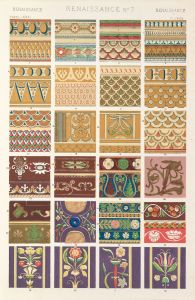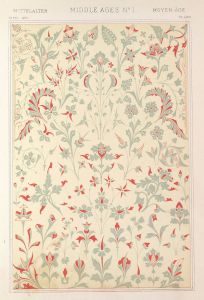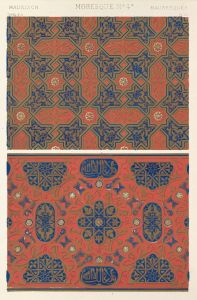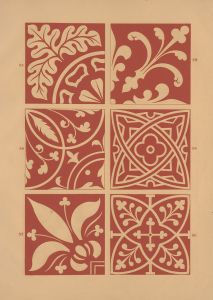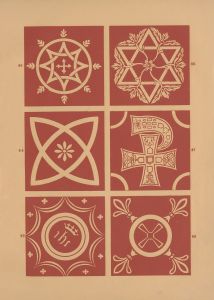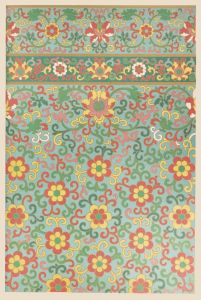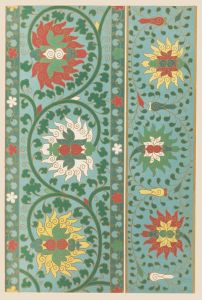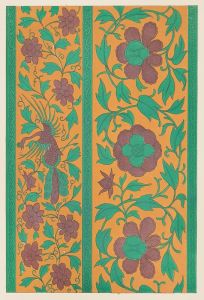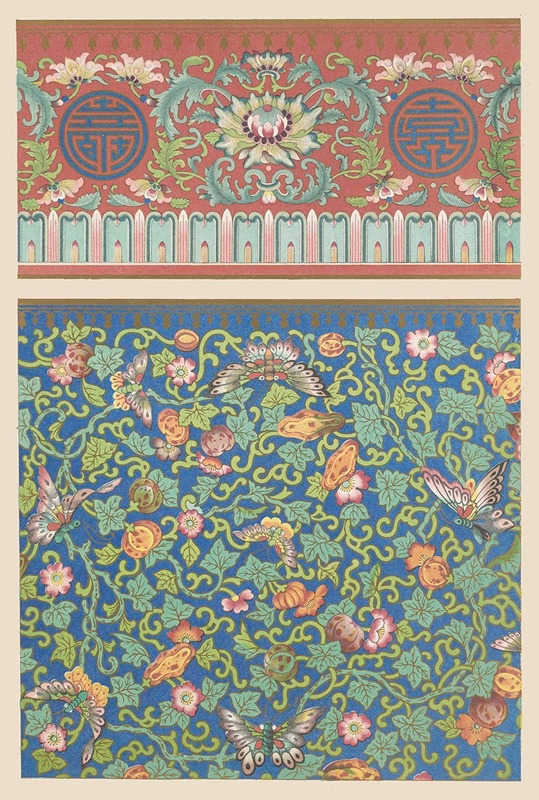
Examples of Chinese ornament, Pl.75
A hand-painted replica of Owen Jones’s masterpiece Examples of Chinese ornament, Pl.75, meticulously crafted by professional artists to capture the true essence of the original. Each piece is created with museum-quality canvas and rare mineral pigments, carefully painted by experienced artists with delicate brushstrokes and rich, layered colors to perfectly recreate the texture of the original artwork. Unlike machine-printed reproductions, this hand-painted version brings the painting to life, infused with the artist’s emotions and skill in every stroke. Whether for personal collection or home decoration, it instantly elevates the artistic atmosphere of any space.
"Examples of Chinese Ornament, Pl. 75" is a plate from the influential design book The Grammar of Ornament by Owen Jones, first published in 1856. Owen Jones (1809–1874) was a British architect and designer known for his contributions to design theory and his efforts to document and celebrate the decorative arts of various cultures. The Grammar of Ornament is a comprehensive collection of decorative patterns and motifs from around the world, intended to serve as a resource for designers and artists.
Plate 75 specifically focuses on Chinese ornamentation, showcasing a selection of decorative motifs inspired by traditional Chinese art and design. The designs in this plate reflect the intricate patterns, symmetry, and vibrant use of color characteristic of Chinese decorative arts. These motifs often include floral patterns, geometric shapes, and stylized natural elements, which were commonly found in Chinese ceramics, textiles, and architectural details.
Jones's work aimed to highlight the aesthetic principles of different cultures, emphasizing the importance of studying and respecting their unique artistic traditions. In the case of Chinese ornamentation, he admired the harmonious balance of form and color, as well as the symbolic meanings often embedded in the designs. While the plate is a representation of Chinese-inspired designs, it is important to note that the illustrations were adapted and interpreted by Jones and his team, rather than being direct reproductions of specific Chinese artifacts.
The Grammar of Ornament was groundbreaking in its time for promoting cross-cultural appreciation of design and for advocating the use of historical and global sources as inspiration for contemporary art and architecture. Plate 75, like the rest of the book, reflects Jones's belief in the universality of design principles and his desire to make these principles accessible to a wider audience.
The book remains a significant reference in the study of design history and continues to influence artists, designers, and scholars interested in the decorative arts.





